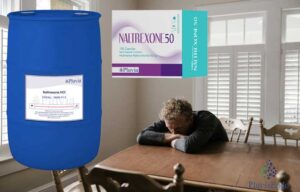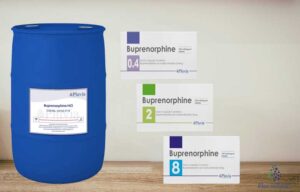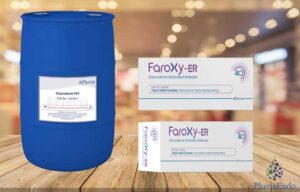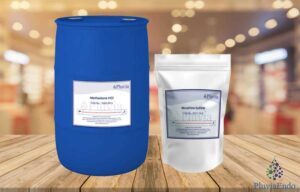Buprenorphine tablets have emerged as a versatile and crucial component in contemporary medicine, providing solutions for both pain management and the treatment of opioid use disorder. In this extensive exploration, we navigate through the various dimensions of the tablets, from their medicinal applications to essential considerations for ensuring optimal patient care.
Buprenorphine Tablets: An Overview of Medicinal Uses and Benefits
Buprenorphine tablets, derived from the opioid alkaloid thebaine, are renowned for their dual roles in pain management and opioid use disorder treatment. In pain management, buprenorphine’s unique properties make it an effective analgesic with a lower risk of respiratory depression compared to other opioids. Additionally, in opioid use disorder treatment, buprenorphine serves as a partial agonist, helping individuals reduce cravings and withdrawal symptoms.
The therapeutic benefits of buprenorphine tablets extend beyond their analgesic properties. Their partial agonist activity at the mu-opioid receptor provides a ceiling effect on respiratory depression, contributing to a safer profile compared to full agonist opioids.
Analysis: Buprenorphine vs. Other Opioid Medications
To appreciate the distinct advantages of buprenorphine tablets, a comparative analysis against other opioid medications is essential. Unlike full agonists like morphine or oxycodone, buprenorphine’s partial agonist activity offers a ceiling effect on respiratory depression, reducing the risk of overdose. This unique pharmacological profile positions these tablets as a safer alternative in various clinical scenarios.
Comparisons also extend to the treatment of opioid use disorder, where buprenorphine’s partial agonist activity makes it a preferred choice for medication-assisted treatment (MAT). The reduced euphoria and withdrawal symptoms contribute to improved patient adherence and outcomes.
Dosage, Effectiveness, and Considerations
In the realm of pain management, buprenorphine tablets showcase their efficacy across a spectrum of conditions. The optimal dosage of buprenorphine is carefully tailored to the individual patient, taking into account factors such as pain intensity, previous opioid exposure, and the presence of coexisting medical conditions.
The effectiveness of buprenorphine in managing pain lies not only in its analgesic properties but also in its favorable safety profile. Healthcare providers must consider the potential for respiratory depression, dependence, and side effects when prescribing this medicine, tailoring treatment plans to the unique needs of each patient.
Sublingual Administration of Buprenorphine Tablets: Best Practices and Patient Education
The sublingual route of administration is a crucial aspect of utilizing buprenorphine tablets effectively. Placing the tablet under the tongue allows for rapid absorption into the bloodstream, contributing to a quicker onset of action. Best practices for healthcare providers include ensuring proper placement, advising against swallowing and counseling patients on the importance of sublingual administration.
Patient education is paramount in optimizing the sublingual administration of buprenorphine tablets. Clear instructions on the correct technique, potential side effects, and the importance of adherence empower patients to actively participate in their treatment.
Buprenorphine Tablets in Opioid Use Disorder Treatment
Buprenorphine tablets play a pivotal role in medication-assisted treatment (MAT) for opioid use disorder. The comprehensive guide to buprenorphine in MAT covers induction strategies, maintenance considerations, and the long-term management of individuals on this medication.
Induction onto buprenorphine requires careful timing, with patients ideally experiencing mild to moderate withdrawal before initiation. Maintenance involves finding the optimal dosage to reduce cravings and withdrawal symptoms without inducing sedation or other adverse effects. The guide also explores considerations for long-term recovery, addressing the complex interplay of biological, psychological, and social factors.
Combination Therapies with Naloxone
The combination of buprenorphine with naloxone in tablet form is designed to prevent misuse and enhance safety in opioid use disorder treatment. Naloxone, an opioid receptor antagonist, is included to deter individuals from abusing the medication by injection. If the combination tablet is crushed and injected, the naloxone component precipitates withdrawal, serving as a deterrent against misuse.
Combination therapies with naloxone aim to strike a balance between providing effective treatment for opioid use disorder and minimizing the risk of diversion and abuse. This section explores the rationale behind this approach and its effectiveness in promoting safer recovery.
Buprenorphine Tablets and Pregnancy
Pregnancy introduces a unique set of considerations when using buprenorphine tablets. Balancing maternal health, ensuring effective treatment for opioid use disorder, and minimizing risks to neonatal outcomes are priorities in this scenario.
Buprenorphine’s use during pregnancy is considered safer compared to full agonist opioids, but careful monitoring is essential. The section navigates through the challenges, considerations, and potential impacts on neonatal outcomes, providing healthcare providers with insights to optimize care for pregnant individuals with opioid use disorder.
Side Effects: Recognizing and Managing Adverse Reactions
As with any medication, buprenorphine tablets are associated with potential side effects. Recognizing and managing adverse reactions is crucial for healthcare providers to ensure patient safety and well-being.
Common side effects, including constipation, nausea, and drowsiness, are explored in this section. Additionally, more serious side effects such as respiratory depression and allergic reactions are addressed, emphasizing the importance of vigilant monitoring and prompt intervention when necessary.
Buprenorphine Tablets and Withdrawal Management
Buprenorphine tablets play a crucial role in managing opioid withdrawal, providing a smoother transition for individuals seeking recovery. Strategies for an effective and well-tolerated withdrawal management plan are discussed, considering factors such as the patient’s opioid history, the choice of induction, and the duration of treatment.
Navigating the challenges associated with withdrawal management ensures a more comfortable experience for individuals seeking to discontinue other opioids and transition to buprenorphine tablets. This section provides insights for healthcare providers to tailor withdrawal management plans based on individual needs.
Buprenorphine Tablets vs. Buprenorphine Films
The availability of different formulations introduces the question of preference and efficacy. This section conducts a comparative evaluation between buprenorphine tablets and alternative formulations such as films.
Factors such as patient preference, adherence, and efficacy in opioid use disorder treatment are examined. Understanding the nuances of each formulation empowers healthcare providers to make informed decisions based on individual patient needs and preferences.
Pain Management in Chronic Conditions
Chronic pain conditions require a nuanced approach to pain management. Buprenorphine tablets offer a potential solution for long-term pain management, providing sustained relief while minimizing the risk of adverse effects associated with full agonist opioids.
Long-term considerations for using buprenorphine tablets in chronic pain include regular reassessment of pain levels, adjustments to the treatment plan as needed, and ongoing monitoring for side effects. This section delves into the complexities of managing chronic pain with buprenorphine tablets, emphasizing the importance of an individualized approach.
Buprenorphine Tablets: Emerging Trends and Future Innovations
As medical research advances, so do the possibilities for innovation in opioid pharmacotherapy. The final section explores emerging trends and potential future innovations related to buprenorphine tablets.
New formulations, advanced delivery methods, and novel approaches to pain management and opioid use disorder treatment are on the horizon. Understanding these emerging trends provides healthcare providers with insights into the evolving landscape of buprenorphine use, paving the way for improved patient outcomes and enhanced therapeutic options.
In conclusion, buprenorphine tablets stand at the intersection of pain management and opioid use disorder treatment, offering a multifaceted approach to patient care. This comprehensive guide navigates through the various aspects of this medicine, providing healthcare providers with insights, considerations, and evidence-based practices for optimal patient outcomes. Always consult with a healthcare professional for personalized advice and guidance regarding the use of buprenorphine tablets or any other medication.









